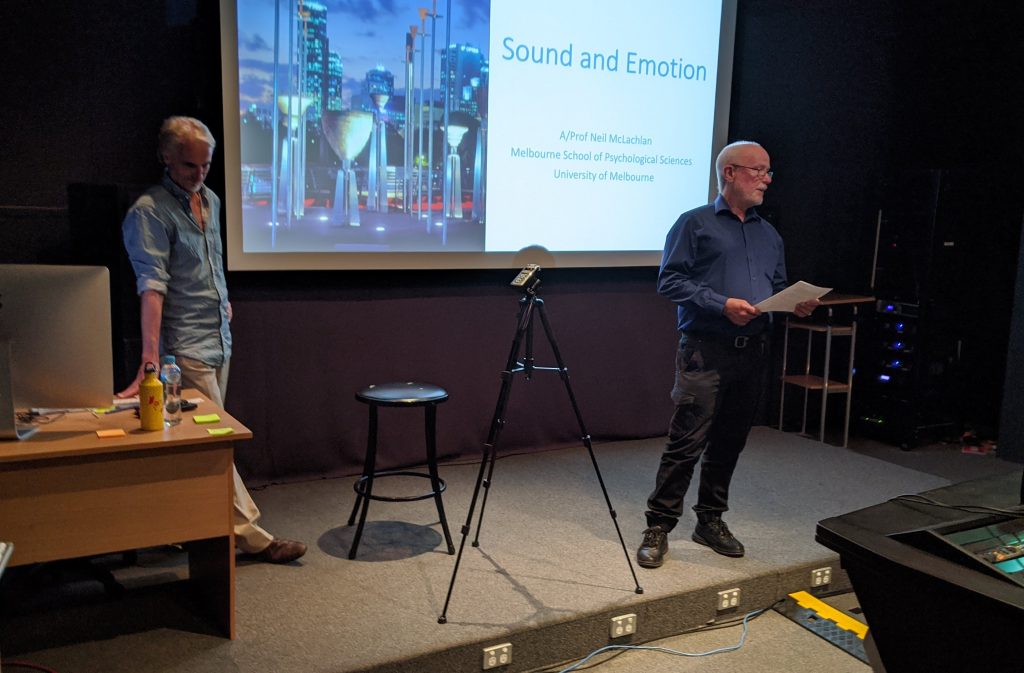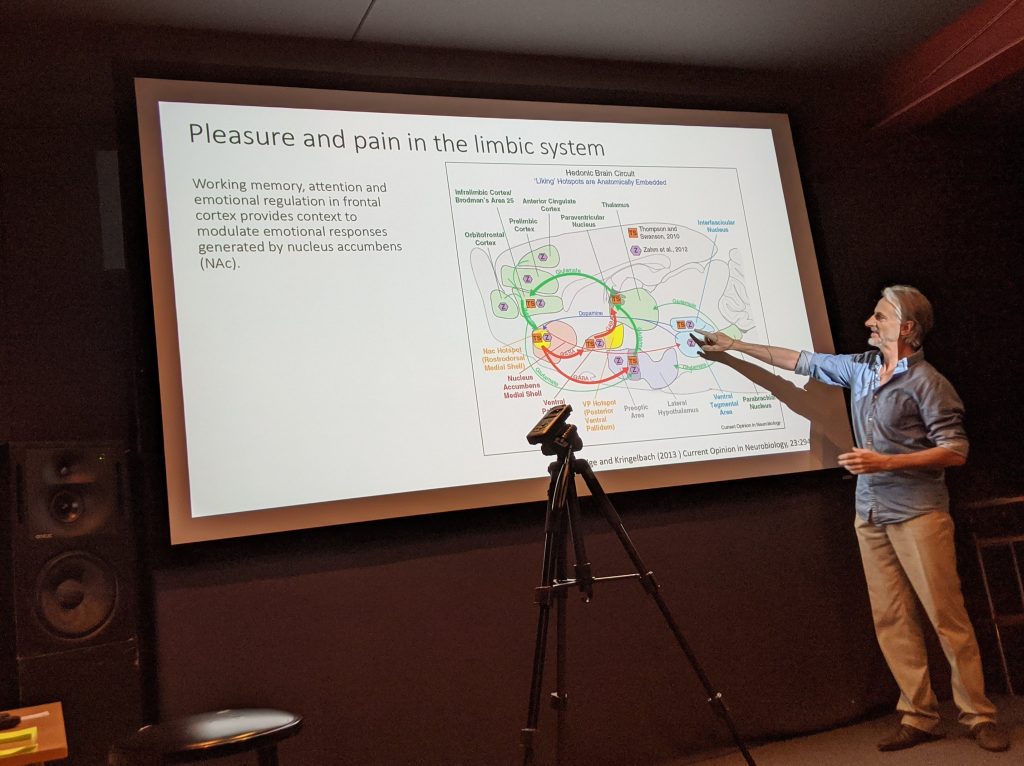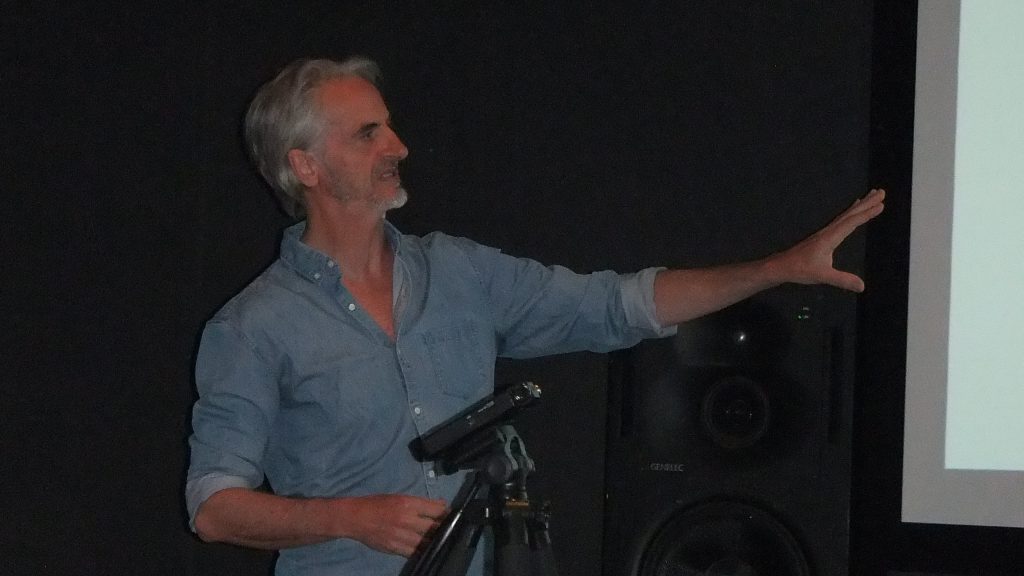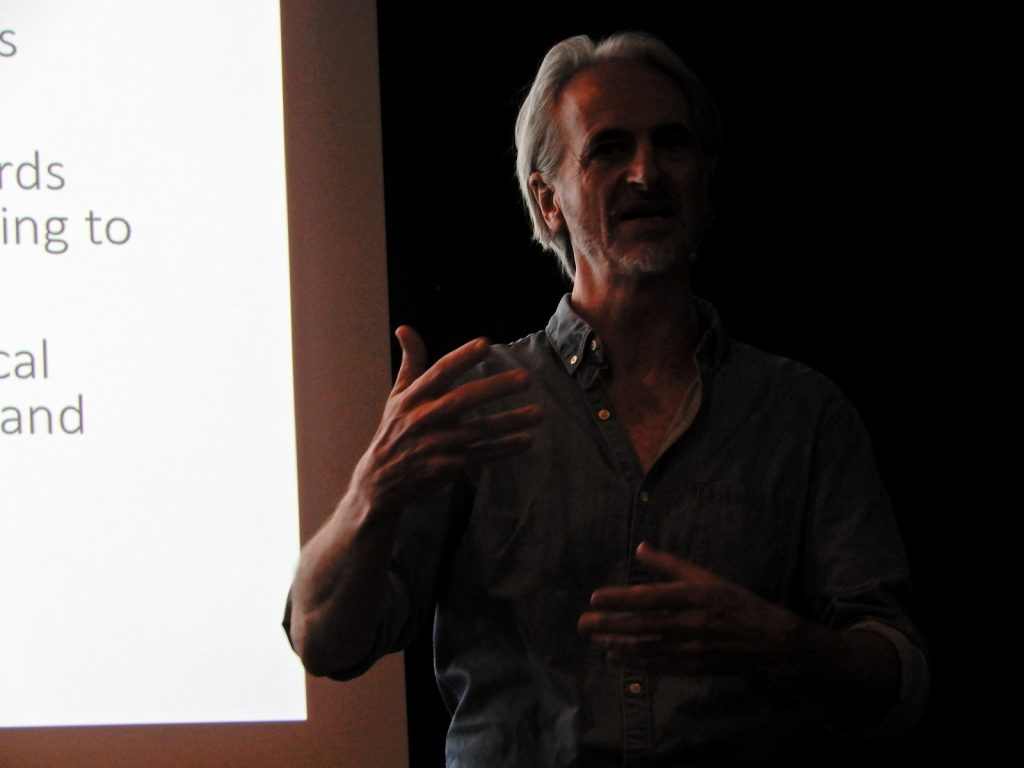Graeme Huon introduced our speaker Neil McLachlan, Associate Professor of the Melbourne University School of Psychological Sciences who was to present to us on Sound and Emotion.
Graeme outlined Neil’s wide range of experience as a researcher in the Departments of Engineering, Architecture, Psychology and Music, as well as working professionally as a performer, instrument designer, and acoustic consultant.

Neil started by introducing the idea
of an “auditory brain”, and understanding sound from a
psychological perspective. He gave us a quick summary of his work on
the Federation Bells project, explaining how one dimensional
vibration systems (i.e. voices and most instruments) naturally
produce harmonic series, but bells, gongs, and other percussions
instruments vibrate in two or three dimensions, so they don’t
produce harmonic series. Up to that point nobody had been able to
produce bells with harmonic series. He then briefly described how he
arrived at the bell shapes necessary to produce bells with perfect
pitch.
He went on to describe his experiences with the Gamelan
Indonesian percussion orchestras and their use of dissonance as a
musical element.
Then he moved on to describing the brain’s functioning in terms of how it forms thoughts in two ways – fast, automatic and emotional and slow, conscious and logical.
He then brought up some drawings of a human brain, showing various sections and their purposes, broken up into reptilian limbic (old mammalian) and neocortex (neomammalian) systems.
He explained that sound recognition is the first thing that happens in the auditory processing stream, and this happens in the primitive reptilian network.

He then displayed his new unpublished model for how the brain works, introducing concepts which he indicated were already known, but that he had brought together to form a new cohesive theory.
He suggested that long term memory is created in the cortico-ponto-cerebellar network of the brain, in respect to common or musical or, in fact any experiences; and these long term memories drive our auditory streaming and musical expectations and our ascetic responses – and that applies to playing records or any acoustic experiences.
He suggested that is why nostalgia is so important. We love the things that we’ve heard before, suggesting that “we don’t hear sounds, we hear the memories that sounds evoke”.

In dealing with the emotions evoked by sounds, he reminded us that like visual display, auditory display can project dominance – for example loud low-pitched vocalizations are associated with physical dominance and aggressiveness in many animals. In humans it is associated with confidence and assertiveness, and suggests a role for autonomic arousal in empowerment and creativity.
Neil finished with his conclusions in relation to music and society, how the brain processes sound and invokes emotional responses, and how music-brain processes can be reliably manipulated in educational and clinical settings using new music technologies to improve people’s social connectedness and mental wellbeing.

The evening concluded with a wide-ranging question and answer session, demonstrating the keen interest the audience had in Neil’s topic.
An audio recording can be heard or downloaded here.
Slides of Neil’s presentation (excluding some yet-unpublished work) are available in PDF form here.
We thank the SAE Institute for the use of their excellent facilities.
